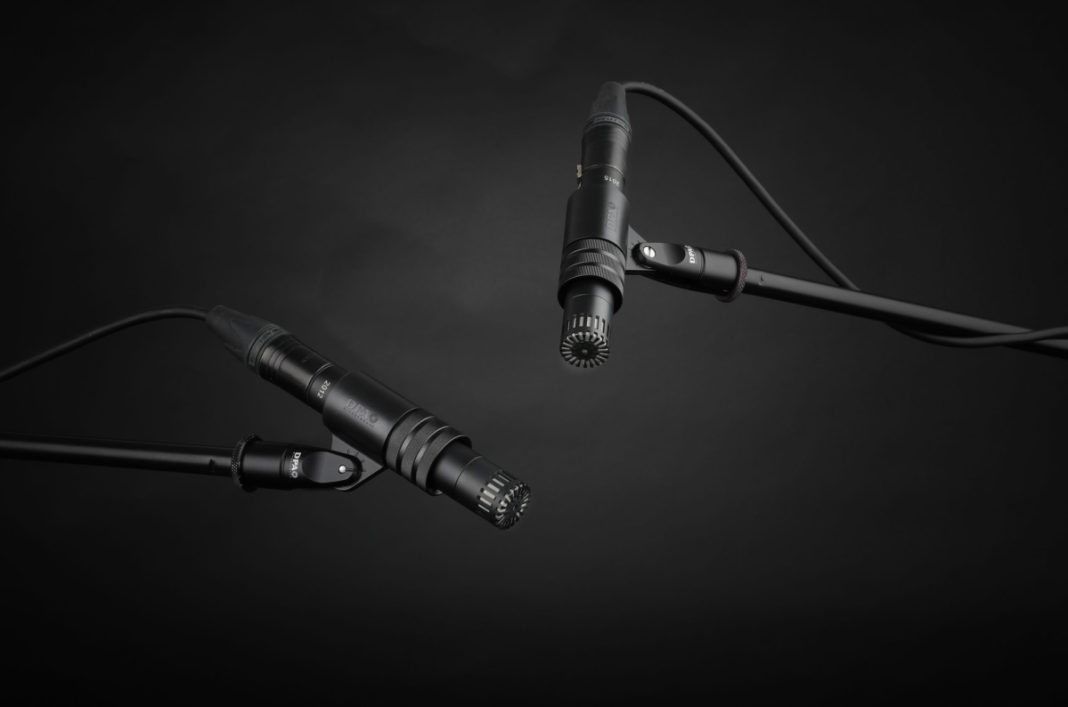What was the inspiration behind the creation and design of 2012 Cardioid and 2015 Wide Cardioid Microphones?
Helga Volha Somava: “The needs of end users in the live events and entertainment market differ from say, recording studios, for example, with added time pressures and limited space. Microphones need to be durable, precise and simple to set up, while maintaining the ability to deliver reliable and consistent sound, which is what we believe we have created with 2012 Cardioid and 2015 Wide Cardioid Microphones.”
How do the 2012 Cardioid and 2015 Wide Cardioid Microphones differ?
Somava: “The 2012 Cardioid is designed for the close miking of instruments, while also doubling as a ‘workhorse’ for the live events space. There are, however, some instrument groups which require a wider pick up area while reducing the bleed from others on the stage, which is where the 2015 Wide Cardioid Microphone comes into play.”
Toni Torras Rosell: “The 2015 Wide Cardioid Microphone can be placed further away to capture instruments over a larger footprint. This is why the nominal sensitivity of the microphone is slightly higher for 2015, so you can handle sound pressure levels on stage with both microphones at varying distances.”
How did the COVID-19 pandemic impact the introduction of these microphones?
Somava: “The preliminary idea for these microphones originated pre-pandemic, however, the possibility to work on it was not there with uncertainty surrounding raw materials and the global supply chain. Toni and the Research and Development (R&D) team began working on these two new microphones almost a year ago. It has been an intense journey to get these products to the market within that time frame.”

What is DPA’s approach to introducing new microphones to the market?
Rosell: “I work with some amazing colleagues with varying expertise and competencies. We make microphones that optimise three different disciplines: acoustics, mechanics and electronics. From the process of creation, we have a Product Management division, which presents us with an opportunity to innovate and we also collaborate with leading experts from our Sales department to devise a desired ‘wish list’ of features. The R&D team then goes through a ‘feasibility study’, which further informs the direction of the theoretical analysis, modelling and simulation of digital prototypes to discover how the varying components of the design will affect the performance of the microphone. From there, we begin prototyping with an idea of where to start, as opposed to trial and error. We also have a capsule lab in production, which is ideal because I typically operate in a virtual world with modelling, so it’s important to get hands-on with real world references.”
Which unique selling points will end users operating in the live touring and entertainment sector benefit from?
Rosell: “These microphones are compact, robust, and can withstand harsh environments and high sound pressure levels. The transient response and uniform directionality of both microphones help end users provide consistent performance, while delivering authentic sound – which is important to any sound engineer and performing artists and a unique selling point of all of our microphones, particularly with 2012 and 2015. Additionally, the compact form factor of both microphones is key to avoiding creating unwanted visual noise on the stage.”

What has the response been like from colleagues and the sector at large?
Somava: “We are lucky enough to have a fantastic and talented group of in-house engineers and product specialists with an expert level of perception of sound along with The DPA Masters Club – a community of highly skilled, actively-working sound engineers, who use DPA Microphones’ solutions in their daily work. This collective was involved in the early stages and their feedback was crucial when it came to the development of 2012 Cardioid and 2015 Wide Cardioid Microphones. The other benefit of having this select committee is that it can also provide us with an unbiased and unfiltered view of what works and what doesn’t in the field. Since introducing 2012 Cardioid and 2015 Wide Cardioid Microphones to the market, our sales channels have reported an overwhelmingly positive response. The addition of these products to our growing portfolio for the live sound sector has been welcomed and each new innovation will eventually allow us to cover the entire stage one microphone at a time.”
This article originally appeared in issue #275 of TPi, which you can read here.






